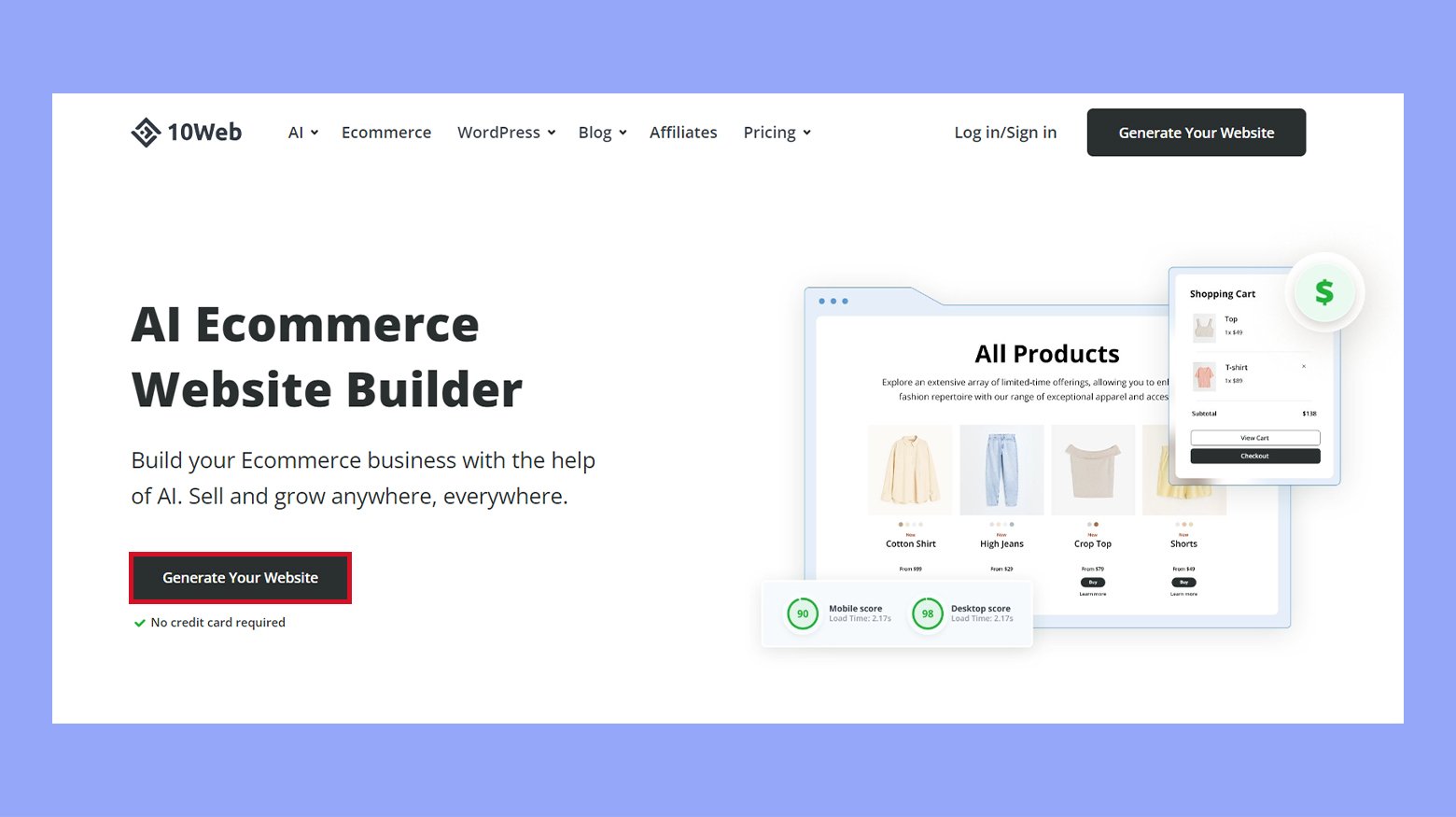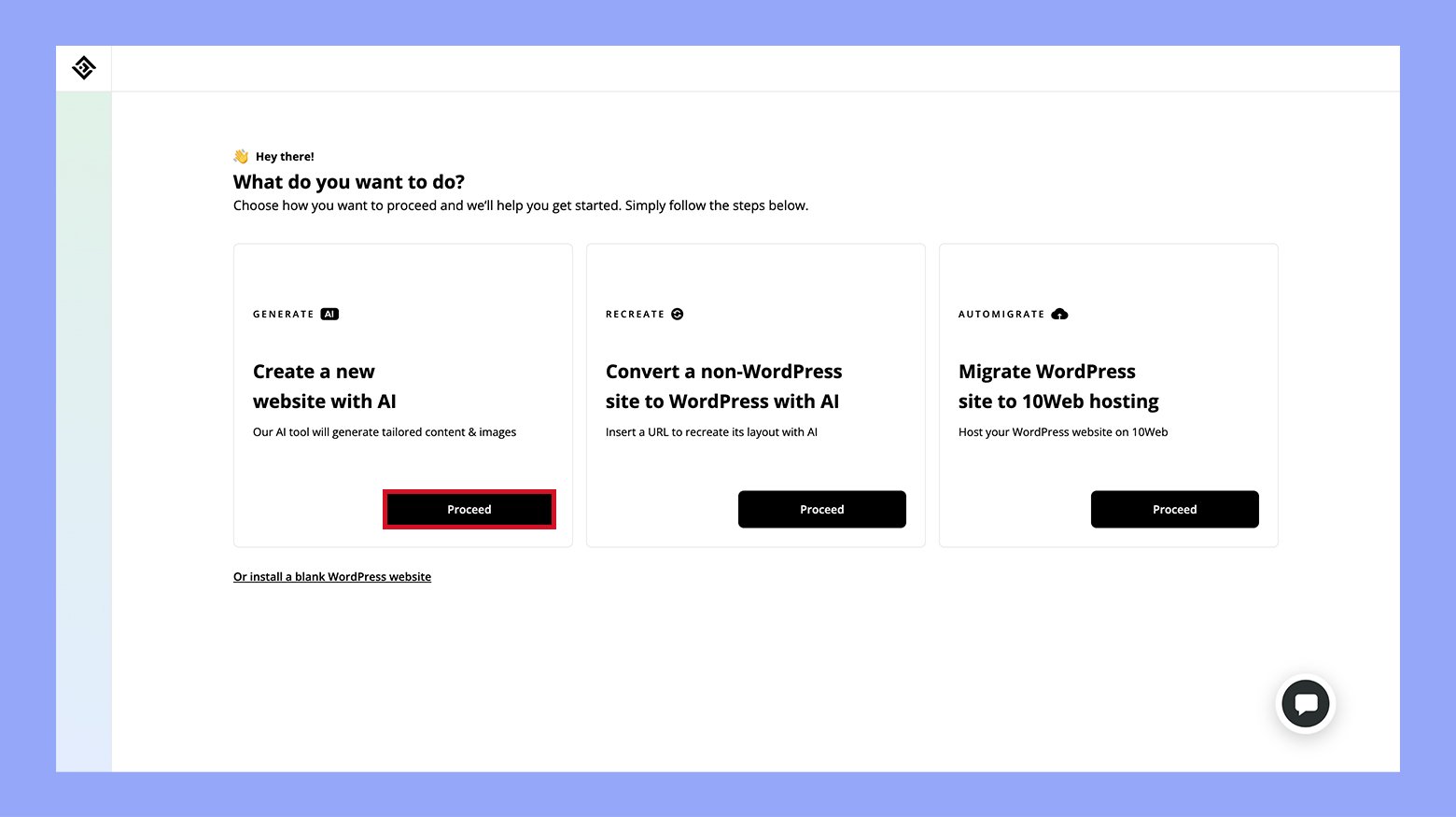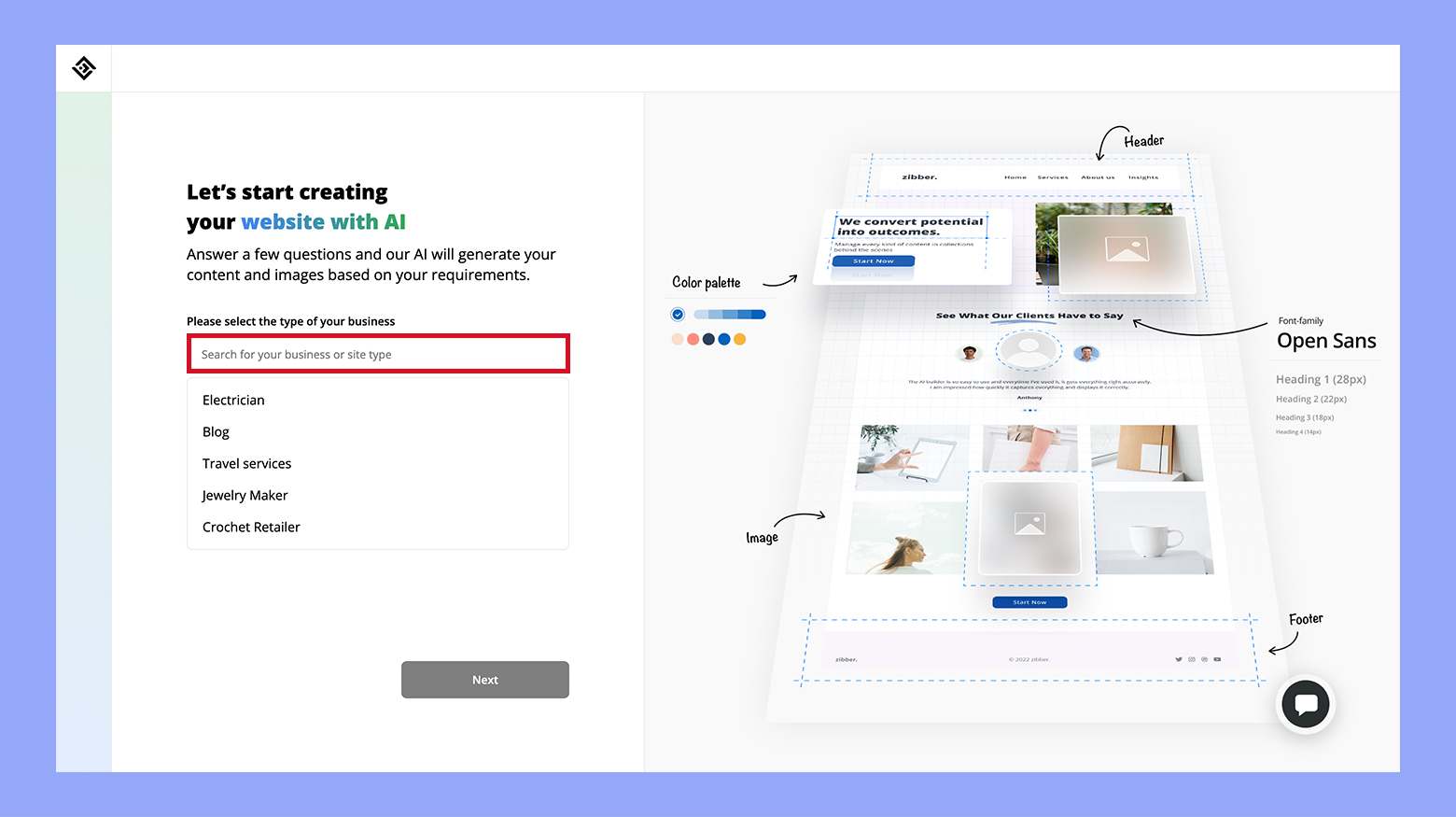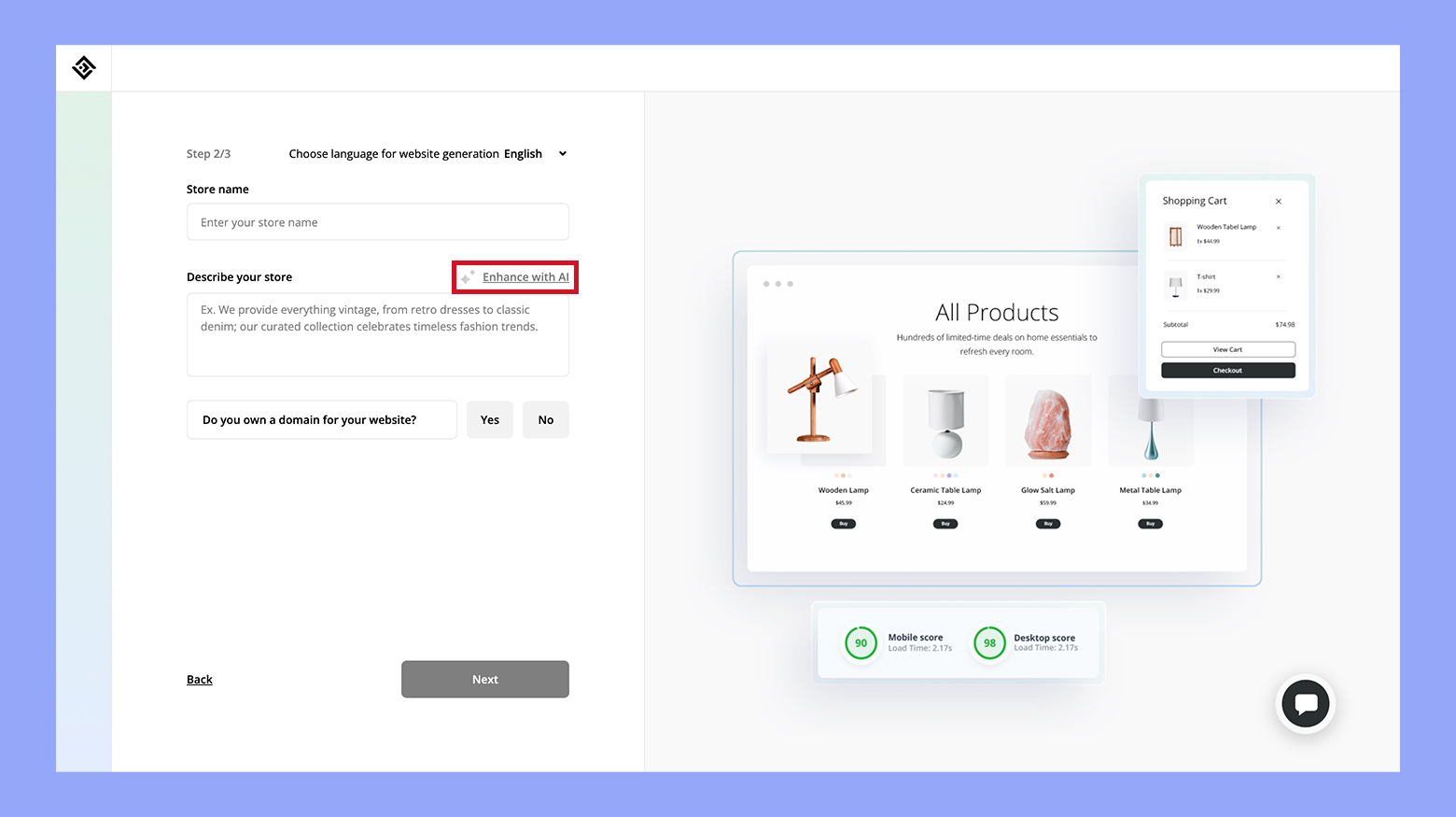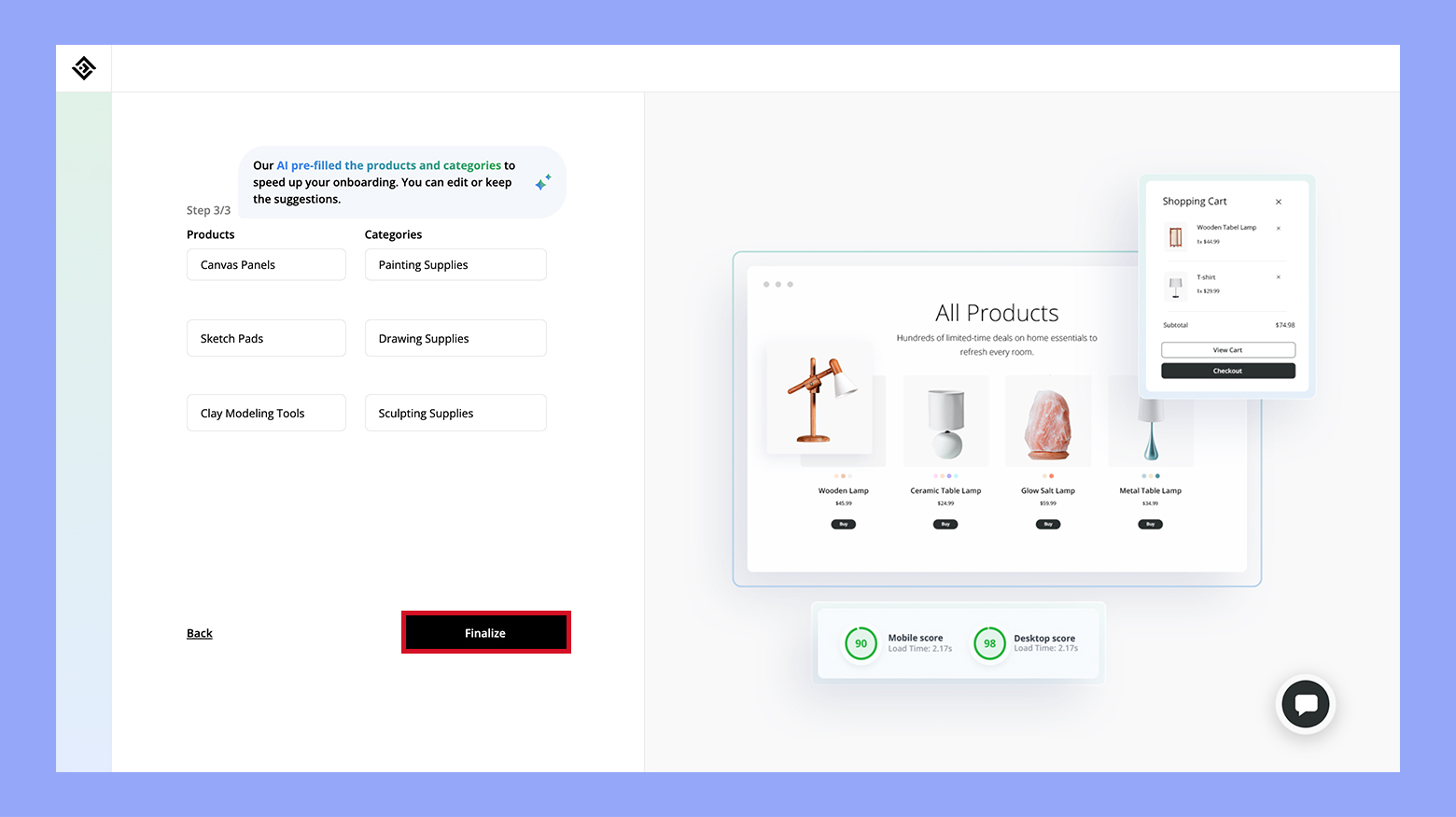Starting a wellness business requires careful planning and execution. This guide provides essential tips on choosing the right location, creating an inviting environment, ensuring safety, and hiring qualified staff. Additionally, it emphasizes the importance of embracing innovation and technology, offering specialized services, and streamlining operations to deliver a memorable customer experience. By following these steps, you’ll be well-prepared on how to start a wellness business and achieve long-term success.
FAQ
Do wellness centers make money? How to start a holistic wellness business? How to start a wellness business with no money? What is a wellness entrepreneur?

Looking to sell online?
Create your custom online store in minutes with 10Web AI Ecommerce Website Builder and take your business online.
Stage 1: Building a strong foundation for your wellness business
Starting a wellness business begins with a solid concept. This means identifying your target audience, establishing what makes your business stand out, developing a business plan, understanding the legal requirements, and securing funding.These elements help set a solid base for your business, ensuring that you are well-prepared to navigate the challenges and opportunities in the wellness industry.
Step 1: Defining your target audience
Knowing your target audience is essential for success. Think about who would benefit most from your wellness services. Are they young professionals, parents, or seniors? Conduct surveys or join community groups to gather data on their needs and preferences. This information will guide your marketing strategy and product offerings, ensuring that you meet the exact needs of your audience.
Step 2: Crafting a unique value proposition
Your unique value proposition (UVP) sets you apart from competitors. Focus on what you can offer that others don’t. This could be specialized knowledge, exclusive products, or exceptional customer service. Clearly communicate your UVP through your branding, website, and social media. This creates a strong first impression and convinces potential customers why they should choose your wellness business over others.

Step 3: Creating a detailed business plan
A business plan is your roadmap. Begin by defining your wellness business concept. Include market research, identifying your target audience, and analyzing competitors. Outline your services or products, pricing strategy, and marketing plans.
Create financial projections to estimate start-up costs, revenue, and expenses. Detail your operations plan, including staffing needs, suppliers, and day-to-day tasks. A strong business plan helps attract investors or secure a bank loan.
Step 4: Understanding legal requirements
Navigating legal requirements is crucial. First, decide on your business structure (sole proprietorship, LLC, etc.). Register your business name and get the required licenses and permits based on your location and services.
You might need a general business license, health department permits, or specific wellness-related certifications. Purchase the appropriate insurance to protect your business from potential risks. Understanding these requirements prevents legal issues and ensures a smooth start.
Step 5: Securing funding and managing finances
Securing funding is essential to kickstart your wellness business. Consider various sources like bank loans, investors, or crowdfunding. Outline your funding needs clearly to potential investors or lenders.
Create a detailed financial management plan. Monitor your budget, track expenses, and maintain accurate financial records. Use accounting software or hire a professional to manage your finances. Proper financial planning helps sustain and grow your business.
Step 6: Setting up fitness and personal care programs
Creating fitness and personal care programs involves several important steps. Start by identifying the specific needs of your clients. Are they looking for personal training, group classes, or specialized fitness programs?
Steps to get started:
- Research trends: Look into current fitness trends and popular personal care services.
- Design programs: Tailor programs to include various levels of difficulty and different health goals.
- Offer flexibility: Provide both in-person and virtual options to meet clients’ preferences.
- Set up the space: Ensure your facility is equipped with necessary fitness and personal care equipment.
By carefully setting up your programs, you’re ensuring that your clients have access to the best fitness and personal care options available.
Step 7: Curating wellness products for your clients
Offering wellness products adds value to your services and provides clients with tools for enhancing their health journey. Start by selecting a mix of fitness, nutrition, and personal care items.
Steps to curate products:
- Identify needs: Conduct surveys or consultations to understand what products your clients need.
- Select quality products: Choose high-quality supplements, skincare products, and fitness gear.
- Partner with brands: Collaborate with reputable brands to offer exclusive or discounted products.
- Create bundles: Develop product bundles that complement your services, like a fitness kit with a workout plan.
- Personalized recommendations: Use insights from your programs to suggest personalized product options for clients.
Curating the right products helps clients feel supported and enhances their overall experience with your wellness business.

Looking to sell online?
Create your custom online store in minutes with 10Web AI Ecommerce Website Builder and take your business online.
Stage 2: Designing Operational Process and Environment
When starting a wellness business, choose the right location, create an inviting environment, and ensure safety. Hire and continuously train qualified staff. Embrace innovation and technology to stay competitive, offer specialized services, and streamline operations for a memorable customer experience.
Step 1: Choosing the perfect location
Selecting the right location for your wellness business is crucial. A high-traffic area with visibility can help attract walk-in clients. Urban centers might offer more exposure, but they often come with higher rent. Consider the neighborhood and parking availability. For a spa, quiet and serene locations work well, while gyms and yoga studios benefit from proximity to residential areas.
Make sure to research local demographics to understand your potential client base. This can help you determine if there’s sufficient demand for your services. Keep an eye out for competitors in the area and think about how your business can stand out.
Step 2: Creating an inviting atmosphere
An inviting atmosphere is essential to making your clients feel welcome and relaxed. Pay attention to the interior design of your space. Use soft lighting, calming colors, and comfortable furniture to create a warm and inviting environment. For a spa, you might consider water features, soft music, and pleasant aromas.
Ensure every area of your wellness center, from the reception to the treatment rooms, is designed with the client’s comfort in mind. Keep clutter to a minimum and maintain cleanliness. Add personal touches like inspirational quotes or plants to enhance the ambiance.
Step 3: Ensuring safety and compliance
Safety and compliance are non-negotiable in the wellness industry. Know the local regulations and ensure your wellness business meets all safety and health standards. This includes proper ventilation, fire exits, and sanitation facilities. Regularly train your staff on safety protocols and emergency procedures.
Additionally, invest in high-quality, non-toxic equipment and supplies. For instance, use hypoallergenic products in a spa or yoga studio to cater to clients with sensitivities. Ensure all equipment is regularly inspected and maintained. This attention to detail not only keeps clients safe but also builds trust and credibility for your business.
Step 4: Hiring qualified staff and therapists
Start by defining the qualifications and skills needed for each role. Look for therapists with proper licenses, certifications, and relevant experience in fields like massage therapy, physical therapy, or nutrition.
To find the right candidates, post job listings on relevant job boards and industry-specific forums. Conduct thorough interviews and check references to ensure the best fit for your wellness business. Make sure to verify all credentials and certifications.
Creating a positive work environment can also make your center more appealing to top talent. Offer competitive salaries and benefits, and provide a clear job description and growth opportunities within your business.
Step 5: Investing in continuous training and education
Ongoing professional development is essential for keeping your staff up-to-date with industry trends and best practices. Regularly organize workshops, seminars, and training sessions focused on new techniques, equipment, and wellness trends.
Encourage staff to attend industry conferences and courses, and consider providing financial support for these activities. This not only improves the quality of services but also boosts employee satisfaction and retention.
Set up a mentorship program where experienced staff can guide newer employees. Use online platforms for continuous education, allowing your staff to learn at their own pace. By investing in training, you ensure that your wellness center maintains high standards and stays competitive.
Step 6: Integrating technology into your services
Start by offering online appointment bookings to make it easier for clients to schedule their sessions. Use wellness apps to track clients’ progress and provide personalized feedback. Virtual consultations can expand your reach, allowing you to serve customers who cannot visit in person.
Consider investing in wearables like fitness trackers to monitor clients’ health metrics in real-time. These gadgets can provide valuable data that helps you offer personalized advice. Online courses and digital content can be another way to share wellness tips and exercises.
Use social media and a professional website to market your services. Create engaging content to attract clients and build your brand. You can also offer webinars and live classes to engage with your audience and showcase your expertise.
Step 7: Staying ahead of wellness tech trends
Stay updated by attending industry trade shows and reading wellness and tech journals. Subscribe to newsletters and follow influential figures on social media to get timely updates.
Keep an eye on emerging technologies like AI and machine learning, which can offer more advanced and customized wellness plans. Software that analyzes health data can be a game-changer. Invest in tools and software that use these technologies to better serve your clients.
Don’t ignore client feedback. Use surveys to learn what technology they find helpful or wish you offered. Keeping your business aligned with the latest trends will help you stay competitive and attract more clients.
Step 8: Offering targeted treatments and therapies
Providing unique treatments such as acupuncture, yoga, or massage can attract clients looking for specific benefits. Research the demand for these services in your area to tailor your offerings accordingly. Niche treatments not only draw in specific demographics but also position your wellness business as an expert in these areas.
Additionally, hiring certified professionals ensures the quality and safety of these treatments. Make sure to market these unique offerings effectively through social media, local events, and partnerships with healthcare providers.
Step 9: Customizing programs for diverse clients
Recognize that your clients will have varied needs, whether they’re interested in fitness classes, personal training, or meditation sessions. Develop tailored programs that address different ages, fitness levels, and health goals.
For instance, create dedicated yoga classes for seniors to promote flexibility and balance, or specialized training sessions for athletes focusing on strength and endurance. Use initial assessments to craft personalized wellness plans and adjust them as needed based on your clients’ progress. This customization enhances client satisfaction and loyalty.
Step 10: Streamlining day-to-day operations
Efficient operations are crucial for a wellness business. Start by organizing daily tasks such as appointment scheduling, facility maintenance, and staff management. Use booking software to handle appointments and reduce manual work.
Keep your facility clean and well-maintained to ensure safety and comfort for all clients. Develop a maintenance routine and assign responsibilities to your team.
Communication is also key. Use customer management systems to track client preferences, send reminders, and handle follow-ups. This helps build a personalized experience and fosters loyalty.
Lastly, monitor your finances closely. Track expenses, create a budget, and regularly update your financial plan. This ensures your business stays profitable and can grow sustainably.

Looking to sell online?
Create your custom online store in minutes with 10Web AI Ecommerce Website Builder and take your business online.
Step 11: Enhancing the customer journey
The customer journey starts long before they walk through your door. Begin with a welcoming and informative website. Ensure it is easy to navigate and provides all necessary information such as services offered, staff profiles, and contact details.
Your staff plays a crucial role in customer experience. Train your team to be friendly, knowledgeable, and attentive. First impressions matter, so ensure your reception area is inviting and that your staff greets clients warmly.
Offer personalized services by understanding client’s specific needs and preferences. Use client data from your management systems to tailor services and make each visit special.
Lastly, gather feedback regularly. Encourage clients to share their thoughts through surveys or suggestion boxes. Use this feedback to continuously improve your services and operations.
By focusing on streamlined operations and a great customer journey, you set the foundation for a thriving wellness business.
Step 12: Expanding your service offerings
Adding new services is an effective way to attract more clients and stay ahead of the competition. Begin by assessing current trends in the wellness industry. For instance, offering digital services like online yoga classes can reach customers who prefer at-home options.
You can also introduce complementary services, such as nutritional counseling or wellness workshops. These additional services provide value to your clients and increase your revenue streams. It’s essential to train your team to deliver these services with quality. Ensuring customer satisfaction will help create a loyal customer base.
Step 13: Scaling your business profitably
To scale your wellness business, focus on maintaining profitability. This means managing costs while expanding. One way is to optimize your current operations. For example, use efficient scheduling software to reduce idle time and maximize bookings.
Diversifying your revenue sources is another strategy. Consider product sales, like wellness products or branded merchandise. This not only adds income but also strengthens your brand. Additionally, investing in marketing campaigns can bring in new customers. Social media and email marketing are cost-effective methods to reach a wider audience.
Staying aware of your financial health is crucial. Regularly review your financial statements to ensure you’re growing sustainably. By following these steps, you can scale your business successfully and continue to meet your customers’ needs.
Stage 3: Marketing your wellness brand and growing your online presence
Marketing your wellness brand involves creating a strong online presence, engaging with your community, and using both online and offline strategies to reach your target market. It’s essential to build a cohesive brand that resonates well with your audience. Now, let’s see how to start a wellness business and grow it!
Step 1: Building your website with 10Web
Your website is the foundation of your online presence. Using 10Web, you can create a visually appealing and functional website, ensuring your site is user-friendly with easy navigation.
- Go to the 10Web Website Builder page and click Generate your website.

- Select Proceed to create a new website with AI.

- Enter your business type.

- Provide a business name and description. Use the Enhance with AI tool if needed.

- Choose Yes to get a domain or click No if you have one already.
- Enter details for your first three services and categories. AI will pre-fill them for you, you can edit or keep the suggestions. When done, click Finalize, and wait for 10Web to generate your site.

- Once your site is generated, preview it and make any necessary adjustments using the user-friendly tools provided by 10Web.
Include sections for services, testimonials, a blog, and a contact page. Optimize for SEO to improve search engine rankings. You can do it with a wellness blog. Integrate booking systems and e-commerce features if you sell products or book appointments.

Looking to sell online?
Create your custom online store in minutes with 10Web AI Ecommerce Website Builder and take your business online.
Step 2: Leveraging social media and online presence
Social media is key to reaching a broader audience. Focus on platforms where your target market is most active, like Instagram, Facebook, or LinkedIn. Share valuable content such as wellness tips, success stories, and behind-the-scenes looks.
Engage with your followers by responding to comments and messages promptly. Use hashtags to increase your visibility. Collaborate with influencers in the wellness industry to expand your reach. Regularly analyze your social media metrics to refine your strategy.
Step 3: Building a community around your brand
Building a community fosters loyalty and engagement. Create a private Facebook group or forum where your audience can connect and support each other. Host live events, webinars, or Q&A sessions to engage directly with your community.
Offer exclusive content or discounts to members. Organize challenges or contests to encourage participation. Let your community members share their experiences and success stories. This helps build trust and shows the real impact of your brand.
Step 4: Implementing offline marketing strategies
Offline marketing shouldn’t be ignored. Network by attending local health fairs, wellness events, or community gatherings. Print flyers and business cards to distribute at these events.
Consider partnerships with local gyms, spa centers, or health food stores. Offering workshops or free seminars can showcase your expertise. Word-of-mouth can be powerful, so encourage satisfied clients to refer others.
Using these strategies will make your wellness brand more visible and attract your target market effectively. Your website, social media, community-building efforts, and offline strategies all work together to create a strong presence for your business.
Conclusion
Starting a wellness business is a journey that requires ongoing dedication to improvement and adaptation. By continually investing in your staff, embracing the latest technologies, and focusing on delivering exceptional client experiences, your business can thrive. Remember, success in the wellness industry is not just about the services you offer but how well you meet the evolving needs of your clients. Stay committed to excellence and innovation, and your wellness business will flourish. Using tools like 10Web can help streamline your operations and enhance your online presence, contributing to your overall success. Now you know how to start a wellness business. Stay committed!


